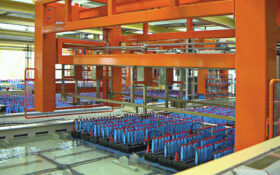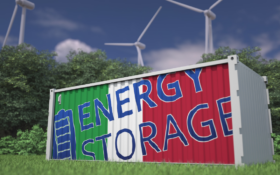Energy storage company CellCube of Austria and Australia’s North Harbour Clean Energy (NHCE) announced a 4MW/16MWh vanadium redox flow battery (VRFB) installation in Australia.
The agreement also involves building an assembly and manufacturing line in Eastern Australia. This is to meet GWh demand for long duration energy storage in the National Electricity Market (NEM).
The pair said their first project will be developing the continent’s largest VRFB, which will generate 4MW/16MWh based on CellCube’s proprietary technology.
CellCube, also known as Enerox, and NHCE will conduct a feasibility study and work towards a final investment decision on a 50:50 joint venture to manufacture VRFBs in Australia.
The companies said on a levelised cost of storage basis, VRFBs already outperform LIBs whilst having “none of the associated drawbacks”.
NHCE has secured a large project pipeline to include deployments of VRFBs.
NHCE Managing Director and founder, Tony Schultz, said: “NHCE and CellCube will collectively review and select the best site to deliver initial annual production capacity of at least 40MW/160MWh, with a target of 1000MW/8000MWh per year and creating more than 200 new jobs in the short term.”
VRFB technology was developed at the University of New South Wales in the mid 1980s and is now becoming an accepted alternative battery energy storage technology globally, he said. Australia has abundant vanadium resources.
NHCE Executive Director of Development Steve Banning said they will warrant the systems for 20,000 cycles or approximately 20 years of use.
NHCE signed an MOU with Australian Vanadium earlier this year for development of VRFB projects and vanadium electrolyte supply.












